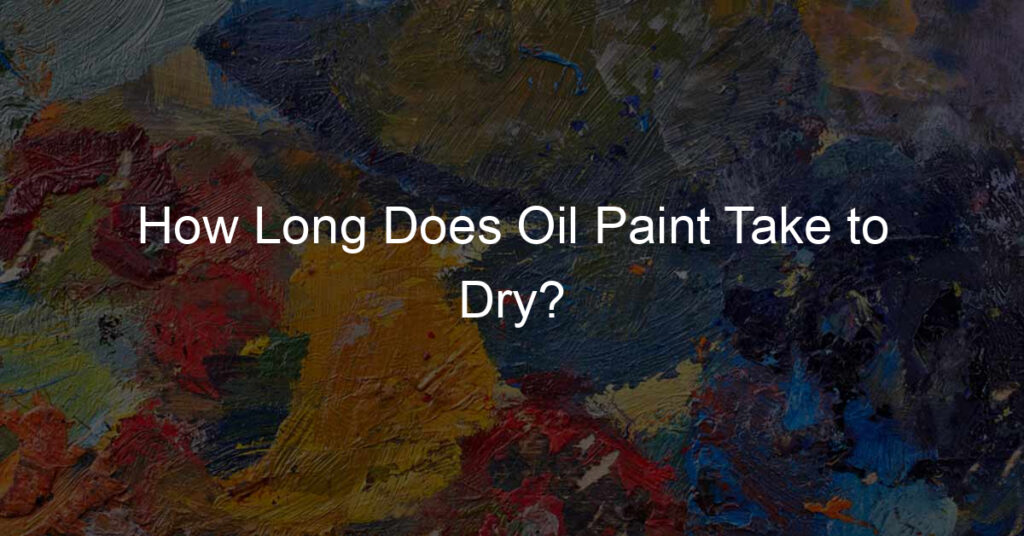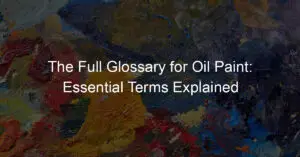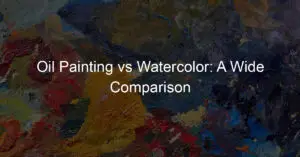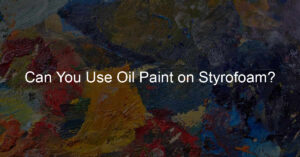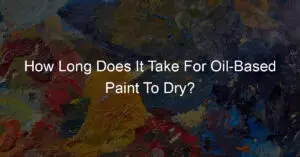The drying time for oil paint varies depending on the particular paint color or pigment, how thickly it is applied to the canvas and what type of oil you use. Over the years, many different types of oils have been used in oil paint formulations, but the three most commonly used are linseed oil, poppy seed oil, and walnut oil.
The average drying time for oils using linseed oil ranges from one day to several weeks depending on the thickness of the application. Generally speaking, thin applications dry faster than thick applications. Therefore, it is much more difficult to estimate how long an oil painting made with linseed oil will take to dry.
Since you have no idea if you painted your canvas “thickly” or “thinly”, it could be anywhere between 1-12 days for a full oil painting. If you’re curious about what type of drying times other types of oils provide
How Do Different Oils Affect Oil Paint?.
Oil paints using poppy seed oil as the base take roughly half as long to dry as linseed oil. Generally speaking, an oil painting made with poppy-seed-based oils can be expected to dry within 1-3 days. If you’re curious about what type of drying times other types of oils provide.
What are the Pros and Cons of Linseed Oil?
Pros: Very flexible when dry, causes fewer cracks than walnut or poppy seed oils Cure quickly Water-resistant Permanently flexible The most common oil used for today’s artist paints Most widely available
Cons: Thickens/curdles when mixed with cold water or white spirit Expands significantly when dry, may cause cracks Can turn yellow if exposed to light
Walnut Oil *New Choice*
The drying time for oil paints using walnut oil is roughly the same as that of poppy-seed oils. Generally speaking, an oil painting made with walnut-based oils can be expected to dry within 1-3 days. If you’re curious about what type of drying times other types of oils provide.
Why does my oil paint not dry?
There are a couple of reasons that oil paint may not be drying. If you have an oil painting that has been painted with linseed-oil paints it does not dry, the problem could be from your linseed/paint mixture being contaminated with walnut or poppy oils. Another possibility is the use of a “cold-pressed” linseed oil instead of a “boiled” linseed oil can also cause this problem.
How To Fix Oil Paint That Will Not Dry:
To fix your oil paint so it will dry, first wipe down your still wet or tacky painting surface with mineral spirits to remove any un-dried paint film. Next pour some boiled linseed oil into another container and mix in enough damar varnish to make your paint non-tacky and then mix in just enough raw linseed oil so that it isn’t tacky, but you do not over-saturate the mix with varnish. Now wipe down your painting surface again and pour a small puddle of this new mixture onto your oil painting and rework the wet or tacky areas and allow to dry completely. If this is done correctly, your painting will cure without cracking as long as all drying conditions were met (temperature, humidity etc.)
Can you use a hairdryer on oil paint?
No. You should never attempt to use a hairdryer on an oil painting that is not completely dry and hard. The problem with this is that the heat from the hairdryer will disturb the varnish and drying oils causing them to migrate, hence causing cracking in your paint film or surface deterioration of your canvas.
How To Prevent Oil Paint From Curing Too Slowly:
Oil paints containing flaxseed oil can take several days to cure fully depending on room temperature, humidity and other environmental factors (i.e., exposure to light). If you know that you need faster curing time for your oil paint, then add 1 tsp. alkyd medium (any brand) per ounce of color and mix well before painting. To minimize open time allow a minimum of 24 hours in a warm, dry room.
Oil Paint Drying Time: Oil Paints drying times will vary depending on the amount applied and whether or not they have been thinned with oil mediums. Typical drying time for canvas boards and panels is one to two days in ideal working conditions (72°F/22°C).

